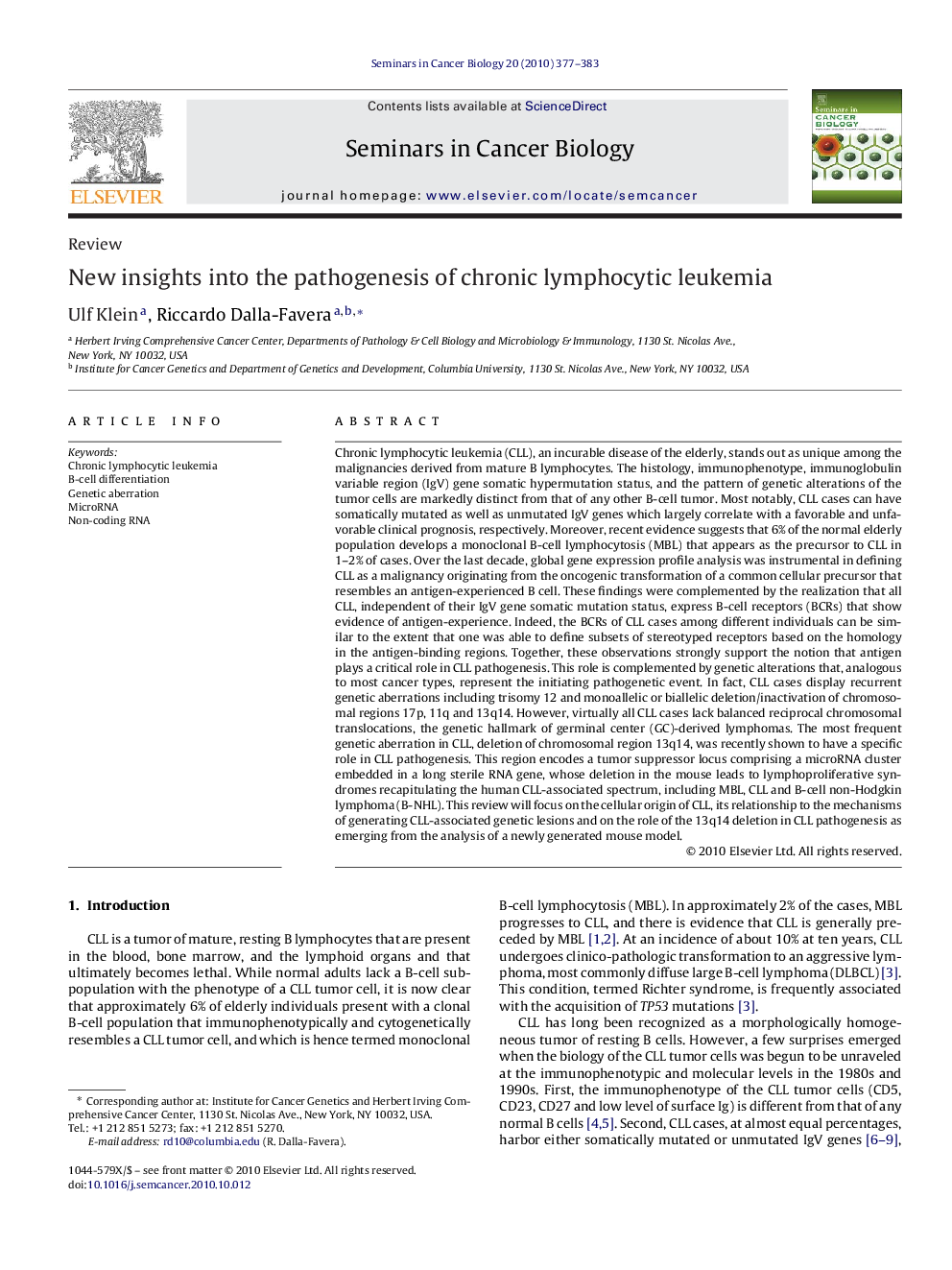| Article ID | Journal | Published Year | Pages | File Type |
|---|---|---|---|---|
| 2023863 | Seminars in Cancer Biology | 2010 | 7 Pages |
Chronic lymphocytic leukemia (CLL), an incurable disease of the elderly, stands out as unique among the malignancies derived from mature B lymphocytes. The histology, immunophenotype, immunoglobulin variable region (IgV) gene somatic hypermutation status, and the pattern of genetic alterations of the tumor cells are markedly distinct from that of any other B-cell tumor. Most notably, CLL cases can have somatically mutated as well as unmutated IgV genes which largely correlate with a favorable and unfavorable clinical prognosis, respectively. Moreover, recent evidence suggests that 6% of the normal elderly population develops a monoclonal B-cell lymphocytosis (MBL) that appears as the precursor to CLL in 1–2% of cases. Over the last decade, global gene expression profile analysis was instrumental in defining CLL as a malignancy originating from the oncogenic transformation of a common cellular precursor that resembles an antigen-experienced B cell. These findings were complemented by the realization that all CLL, independent of their IgV gene somatic mutation status, express B-cell receptors (BCRs) that show evidence of antigen-experience. Indeed, the BCRs of CLL cases among different individuals can be similar to the extent that one was able to define subsets of stereotyped receptors based on the homology in the antigen-binding regions. Together, these observations strongly support the notion that antigen plays a critical role in CLL pathogenesis. This role is complemented by genetic alterations that, analogous to most cancer types, represent the initiating pathogenetic event. In fact, CLL cases display recurrent genetic aberrations including trisomy 12 and monoallelic or biallelic deletion/inactivation of chromosomal regions 17p, 11q and 13q14. However, virtually all CLL cases lack balanced reciprocal chromosomal translocations, the genetic hallmark of germinal center (GC)-derived lymphomas. The most frequent genetic aberration in CLL, deletion of chromosomal region 13q14, was recently shown to have a specific role in CLL pathogenesis. This region encodes a tumor suppressor locus comprising a microRNA cluster embedded in a long sterile RNA gene, whose deletion in the mouse leads to lymphoproliferative syndromes recapitulating the human CLL-associated spectrum, including MBL, CLL and B-cell non-Hodgkin lymphoma (B-NHL). This review will focus on the cellular origin of CLL, its relationship to the mechanisms of generating CLL-associated genetic lesions and on the role of the 13q14 deletion in CLL pathogenesis as emerging from the analysis of a newly generated mouse model.
